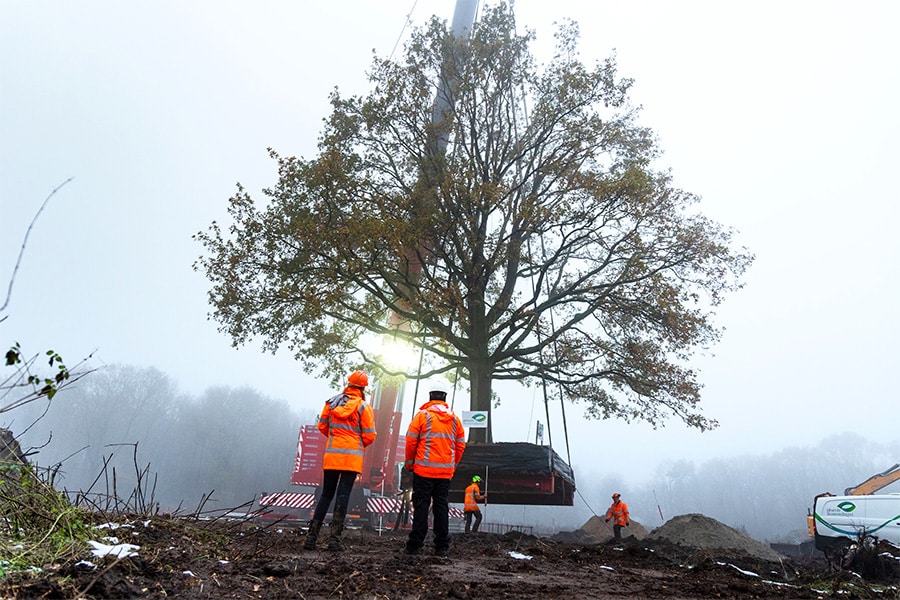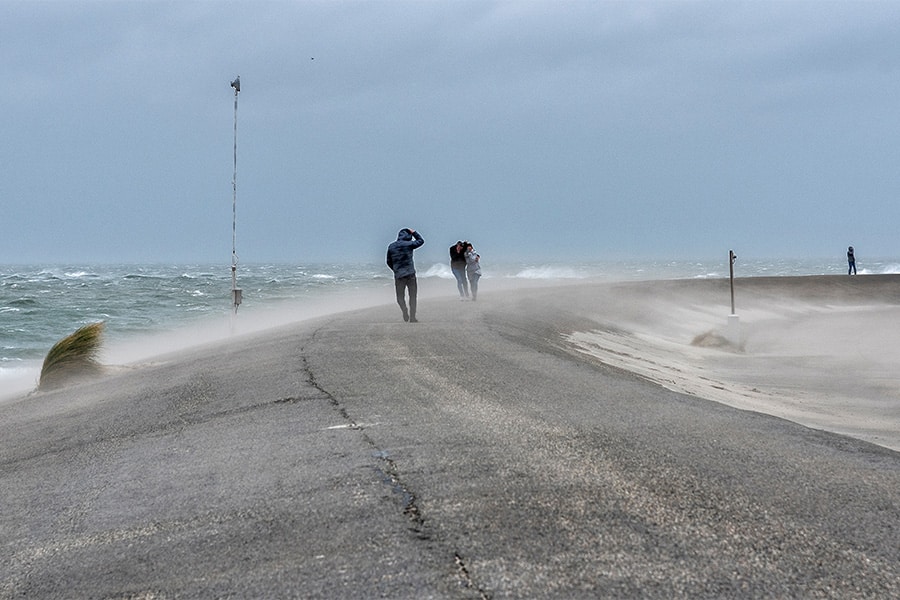
Preservation of movable bridges closer through research on dynamics of movable bridges
In last year's GWW Issue 4, you were able to read about the practical testing of dynamic forces on movable bridges. Kodo Sektani, Engineer and Artworks Consultant at Antea Group, is conducting experimental research to arrive at a mathematical model that will be verified and validated. This research focuses on the theoretical service life of movement structures mechanically driven by both a crank drive rod, and a rack arrangement.
The verified mathematical models should provide a more reliable and realistic picture of the dynamic forces in the components of bridge movement mechanisms, compared to the simplified dynamics models encountered in the rules drafted in 2001, which supplement the 1965 Rules for the Design of Movable Bridges (NEN 6786). The knowledge and insights gained from this research are of great social importance. As part of the important national Replacement and Renovation task, new calculation models may possibly lead to longer use of existing movable bridges.

An important intermediate step in the research regarding the drive
The imposing and oversized measurement setup at TU Delft makes it possible to test the mathematical models in practice without suffering from scale effects. The previous article described in detail which mechanical components of the drive can be tested in practice. Due to the corona crisis, however, practical research has been at a standstill. Sektani used the time freed up to conduct an intermediate step in doctoral research in the theoretical field. "I developed an analytical formula, which can be used to approximate the torque-to-torque characteristic of unregulated drives by using only known operating specifications of a motor," says Sektani.
Why is this necessary? Sektani answers, "First of all, the standard distinguishes between regulated and unregulated drives. A regulated drive uses a VT diagram, which shows the imposed speed in time. The speed is then controlled by a PLC with frequency converter. Think of it as a cruise control of a car, where feedback occurs. You specify what speed you want and the technology controls that speed, regardless of the changing loads the car is experiencing." Sektani continues: "With an unregulated drive, a certain torque is delivered directly by the engine according to the corresponding torque-torque characteristic. Here you don't have it in your control what the speed becomes because it depends on the load, among other things. Thus, especially in the initial trajectory of a bridge opening, it is also not predictable what the maximum occurring loads are in the driveline at the load situation "beginning opening from closed position" before the bridge moves uniformly. In my new formula, the operating specifications of the motor can be entered, making it possible to approximate the torque-torque characteristic curve, both for a cage anchor and a slip ring anchor motor. Next, this allows us to make the current dynamic model for unregulated drives more realistic, because the calculation rules currently assume a constant maximum torque that is unrealistically high, with which the bridge would be opened. In practice, however, this depends on the speed as implied by the torque-to-torque characteristic. By instead of calculating a constant, as required by the standard, but instead working with the motor's nonlinear torque-torque characteristic, I improved the theoretical model and made it one step closer to reality again. From now on, the engine characteristic curve is analytically approachable and the dynamic model proposed from it that is nonlinear can be solved numerically. In practice, this means that we can more realistically predict the occurring fatigue loads in the driveline, which will have a lifetime extending effect when (re)assessing the bridge motion mechanisms."

Preventing overdimensioning by calculating with time-dependent variables
The computational rules of the current standard involve a simplified dynamic model with two degrees of freedom. Sektani explains that the first degree of freedom represents the inertia of the motor shaft with directly coupled components, such as the rotor, brake disc, clutch and, in some cases, a flywheel. The second degree of freedom is modeled by a second inertia, which includes all bridge-side components, such as the bridge deck and ballast weight. These two inertias are connected by a single linear rotational spring, which represents the stiffness of the overall drive train. This is a great simplification of reality, leaving out many variables. "First of all, motor and brake torque are time-dependent variables, but in the standard they are taken as a constant, always assuming maximum torque. In addition, in the current calculation model for simplification, damping is also kept constant," Sektani continued. "Nowadays, we have advanced calculation tools at our disposal and can avoid overdimensioning of the drive train by applying models that more closely approximate reality and have a beneficial effect on the result.
For simplification purposes, the current calculation rules do not take these beneficial effects into account. In some cases, this results in overdimensioning of the drive unit in new construction. As a result, you then also have to oversize all the parts connected to it, such as the gearboxes. Even when re-evaluating an existing bridge, this can cause you to write off an entire drive train, even though it may not be necessary. That adds costs, never mind that structural modifications may be required that are not at all realizable in the existing construction. So calculating "conservatively" can have major implications for both mechanical and civil engineering for newly designed or existing bridges. My research with experimentally validated models therefore also provides an appropriate answer to the question of how the replacement task of movable bridges can be fulfilled innovatively. I would like to make what I have discovered usable by ultimately translating research results into computational rules for practice. So the overall objective of my doctoral research is to achieve total optimization."

Toward nonlinear dynamic models
"Another important variable, besides the time dependence of the torques, is damping. The standard includes some damping, resulting in a constant dynamic magnification factor of 1.9, which in the case of no damping would take on a value of 2.0. The standard applies this to all types of movable bridges. Not reasonable, since damping does vary for each type of bridge. TNO has published about this before. In my formula, I made this dynamic magnification factor dependent on the damping ratio. By including damping in the theory, we can show its effect."
Sektani created nonlinear mathematical models for the theoretical improvements on the time dependence of external torques and damping, which he solved numerically with Matlab. "The results are surprising. The dynamic load can be reduced as much as 30% by applying my mathematical models." Even where the standard for damping comes out to a constant dynamic magnification factor of 1.9, Sektani made gains and was able to reduce this factor to 1.5. So by calculating in as much detail as possible with variables that were once disregarded, much can be gained in all areas.
In conclusion, Sektani says, "The question now is whether we can also verify these improved mathematical models experimentally. We have recently resumed experimental research, which had been stalled due to the corona crisis. Thanks to cooperating governments, numerous sponsors and, last but not least, Antea Group, the completed measurement setup in TU Delft's Stevinlab II will provide a conclusive answer to this."



